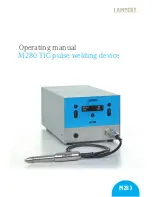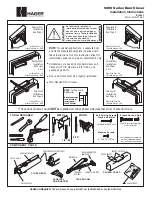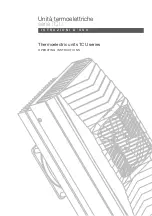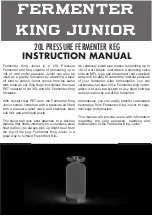
9
CLASSIFICATION AND HAZARDS
SAFETY
The applicable regulations have established various classes of laser hazard based on their ability to cause
injury in human beings, ranging from class I lasers (intrinsically safe in all conditions) to class IV lasers
(dangerous under a variety of conditions).
Class III includes lasers bearing the "WARNING" label. Such lasers generally do not result in damage to the
eye in the event of momentary exposure (thanks to the eyelid self-defence reflex when exposed to intense
visible light), but which may be extremely hazardous if observed through microscopes or magnifying glasses.
Other lasers included in the same class, but bearing the "HAZARD" label may exceed the maximum permitted
exposure level within 0.25 seconds of exposure.
Class IV includes all lasers that can produce risks, not only in the case of the direct or reflected radiation,
but also the diffused radiation. Such laser sources may constitute significant risks for the skin, as well as
the risk of igniting inflammable materials. For the reasons listed above, the user must implement all the
measures necessary to confine the radiation so as to ensure that it is terminated at the end of its useful
process. Furthermore, the operator must be aware of the risks deriving from exposure to laser radiation and
be equipped with the appropriate PPE (personal protective equipment) consisting of certified glasses for
protection from laser radiation.
RADIATION VISION CONDITIONS
The laser at the output of the resonator should be regarded as a highly collimated and intense monochromatic
light source. Thus, it may be thought of as a very bright "point source". This means that the resulting "image"
is then focused on the retina in a highly concentrated spot having a dangerously high power density! If, on
the other hand, the beam becomes divergent and spreads out over a non-reflecting screen, the image will be
viewed as an "extended" area, having a significantly less dangerous power density. It is, therefore, possible
to distinguish between different types of radiation vision conditions in relation to the way the radiation itself is
accessed and hence the differing degree of danger.
• Direct vision of the laser beam
This type of exposure is the most dangerous and may occur at the laser aperture, after removing the
optics. This should be avoided at all costs! No protective eyewear can guarantee protection against direct
exposure to the laser beam.
• Direct vision of a specularly reflected laser beam
This may occur when the beam is directed at a reflecting surface. Viewing a laser beam that has been
reflected specularly by a flat surface is as dangerous as direct exposure to the beam.
• Direct vision of the beam at the output of an optical fibre
This may occur when connecting the optical fibre to the resonator. Viewing the beam is dangerous up to
a significant distance. Filters and safety glasses cannot guarantee safety.
• Direct vision of the beam downstream of the focusing optics
This may occur if the laser beam is not "killed" by a dedicated absorber device at the limit of its working
range. Viewing the beam is dangerous up to a considerable distance. Filters and goggles can guarantee
safety in the event of short exposures, provided they are suitably sized and certified.
• Vision of the diffused laser beam, downstream of the focusing optics
This is the most common vision condition in the case of a device in the working configuration. The beam is
not dangerous unless exposure occurs at a short distance from the optics, but suitable filters and goggles
can guarantee safety, even in the event of lengthy exposure.
The Nominal Ocular Hazard Distance for the
ENESKAlaser 1500 mobile
is less than 15m in the case
of direct or specular ly reflected radiation, and less than 0.5m in the case of diffuse radiation!
Only suitable eyewear having an Optical Density (OD) in excess of 4 is capable of protecting the
eyesight against accidental exposure to harmful laser radiation!
Содержание 4910880
Страница 1: ......
Страница 4: ......
Страница 6: ...SAFETY ...
Страница 18: ...INTRODUCTION ...
Страница 24: ...INSTALLATION ...
Страница 40: ...SETTING THE MACHINE PARAMETERS ...
Страница 44: ...WELDING WITH THE ENESKAlaser 1500 mobile ...
Страница 48: ...TROUBLESHOOTING FAULT MAINTENANCE ...
Страница 60: ...GENERAL SAFETY REQUIREMENTS DURING WELDING ...
Страница 65: ...NOTE ...
Страница 66: ...NOTE ...
Страница 67: ...NOTE ...










































